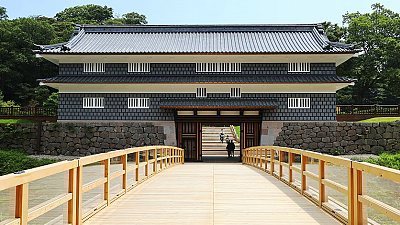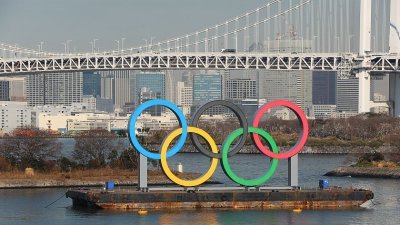Travel restarting: Nikko

Despite a rise in the number of coronavirus infections since the end of the state of emergency in late May, domestic travellers throughout Japan have begun to return to sightseeing spots, albeit in comparatively small numbers. In order to boost the country's badly-hit tourism industry, a nationwide travel campaign came into effect on July 22, although residents of Tokyo - currently advised against non-essential travel outside of the city due to a high volume of cases there - remain excluded. Click here to read the latest updates on the current status of travel.
One day before the start of the campaign, I took a trip to see some of the most popular sightseeing spots in Nikko, to get a sense of the current state of travel as well as the steps being taken to keep visitors safe.

I arrived into Tobu Nikko Station to find it eerily quiet, although the weather - thick mist and dark skies threatening rain at any moment - may have been partly to blame. From the station I jumped on a World Heritage Sightseeing Bus to the elegant Shinkyo Bridge, marking the entrance to Nikko's famous temples and shrines, where I encountered just a few other visitors taking pictures.


From there I made my way to the entrance of the Toshogu Shrine, the most important of Nikko's religious sites and its most popular sightseeing spot.

Tickets are purchased at the outer gate using touchscreen panels and collected upon entry by an attendant from behind a plastic screen, keeping contact to a careful minimum. The use of hand sanitizer did not appear to be mandatory, but bottles could be found at the ticket machines and inside the gates at a reception desk, while a message over a tannoy reminded visitors to observe social distancing and wear masks "as much as possible". As is now commonplace for public spaces in Japan, the service desk offering souvenirs and collector's stamps was draped with a plastic sheet and all staff wore varying levels of protective equipment, from surgical masks to plastic visors.


Although far from crowded, the shrine and its sacred precinct were by far the busiest location I would see today, with a fairly steady stream of visitors at the beautifully decorated Yomeimon Gate and on the stone path leading through the woods to the tomb of Tokugawa Ieyasu.

From the Toshogu Shrine I made my way down to Rinnoji Temple, a large temple belonging to the Tendai sect and the most important Buddhist structure in Nikko. Outside, I saw just a handful of other visitors, including a Japanese tour group.

The admission process here was similar to the Toshogu Shrine, but upon entry I was led on a quick circuit of the temple by a young monk covering its various treasures, in particular the three enormous statues of Amida Buddha, Senju Kannon and Bato Kannon, then over to the temple's treasure house. Here we were given a brief introduction to prayer beads, often seen in Tendai Buddhist worship and ritual. All temple staff wore surgical masks and tour group sizes were kept to a minimum.

A short distance from the more elaborate Toshogu Shrine, Futarasan Shrine is a far older structure dedicated to the deities of Nikko's three most sacred mountains. Today, there didn't appear to be any special restrictions in place but I saw just half a dozen or so visitors within the shrine precinct.

My next stop was Taiyuin, mausoleum of third Tokugawa Shogun Iemitsu, grandson of Ieyasu. Just like Toshogu and Rinnoji, admission was a simple matter of purchasing a ticket from a touchscreen panel and handing it to an attendant through a window. The long pathway leading to the entrance was almost completely empty, and within the temple precinct I saw fewer than a dozen other visitors, allowing unobstructed views of the beautifully decorated buildings.



From central Nikko I took a bus to the peaceful town of Chuzenjiko Onsen, at the foot of Mount Nantai. While its attractions, resort hotels and souvenir shops were all open for business as usual, here the streets were virtually empty and many of the local restaurants appeared to be closed.
My first stop here was the spectacular Kegon Waterfall, the most famous in Nikko and regarded as one of the three most beautiful in all of Japan. Signs at the ticket office required all visitors to the paid viewing platform at the base of the falls to wear a mask, and taking the elevator down I was met by a group of around a dozen visitors enjoying the view.


After taking a moment to enjoy the second view of the falls from the free upper platform, I made my way along the eastern shore of Lake Chuzenjiko to Chuzenji Temple, which apart from a couple leaving just as I arrived, I had all to myself.


Making my way back towards the town, I saw a few solitary small boats out on the lake, as well as the sightseeing cruise which was also operating as normal.


My final stop for the day was the second of Nikko's three Futarasan Shrines, located between the northern shore of the lake and Mount Nantai, to which it is dedicated. Here I encountered a few more visitors, including what looked like a couple of hikers returning from the mountain trail.






